‘Each Final Fantasy is unique in its nature,’ producer Naoki Yoshida recently told me. Never was that more clear than when I played through a roughly two-hour demo of Final Fantasy 16 for the first time.
It features stony, grounded characters and compelling performances. There’s a real-time action combat system with no tactical pauses, no spell menus, and almost no chances to catch your breath. There’s blood splatter, viscera, and the word ‘fuck’. If not for the names of the magic spells and the 16-bit caricatures of the protagonists hidden in the corner of the party screen, a life-long Final Fantasy series follower like myself could easily be convinced this was an entirely different game.
The tagline on Final Fantasy 16’s official website reads: ‘The legacy of the crystals has shaped our history for long enough.’ Now, I can’t help but think this is referring to more than just the game’s plot.
Disclaimer: This preview of Final Fantasy 16 is based on a special version made for the media to experience, and contents may differ from the final version.
In recalling conversations with former Final Fantasy director Yoshinori Kitase (Final Fantasy 6, 7, 8, more), Naoki Yoshida, best known for spearheading the team that completely revitalised the failing MMO Final Fantasy 14, was told that ‘Final Fantasy is basically what the director of the game, at that time, thinks is the best thing to do.’
If you look closely enough at the senior team’s career lineage – which touches on the development of games such as SaGa Frontier, Final Fantasy Tactics, Vagrant Story, and Final Fantasy 12 – you can make several assumptions about where the tone of Final Fantasy 16 comes from, and where it will go. But according to Yoshida and the team, they are largely driven to make games influenced by their own personal interests, which are more mainstream than you’d think – HBO’s Game of Thrones, Christopher Nolan’s The Dark Knight, and Santa Monica Studio’s God of War were regularly brought up as touchpoints.
So, in a clear move to expand the appeal of Final Fantasy 16 to audiences as broad as those of its influences, Yoshida and the team at Square Enix’s Creative Business Unit III have dramatically re-envisioned what Final Fantasy can be.
Something enthusiasts never really think about is just how intimidating a series with the number ’16’ in the title is, to someone more unfamiliar with video games (do you start from the beginning?).
Read: Final Fantasy 16: Everything new we learned from the developers
But FF16 is certainly still a Final Fantasy game to Yoshida and the team. In a presentation, Yoshida emphasised what they regard as Final Fantasy’s core elements – and none of them were specific to genre. You need a strong story, deep character arcs, cutting-edge visuals, and exciting battles. The brief demo we played certainly worked to highlight how each of these ideas could exist in something that didn’t resemble previous games.
Characters, performances, and narrative
Ralph Ineson has an incredibly unique, singular voice. I could pick him as soon as he delivered his first lines. Fresh from seeing him in films like The Northman (2022), The Tragedy of Macbeth (2021), and The Witch (2015), I was very surprised (and pleased) to hear his deep, rumbling voice come out of Cidolfus Telamon, Final Fantasy 16’s version of the recurring mentor archetype of the series. If you know the timbre of Ineson’s voice, and the tone of his most memorable films, you might have a pretty good idea about the atmosphere that Final Fantasy 16 wants to achieve.
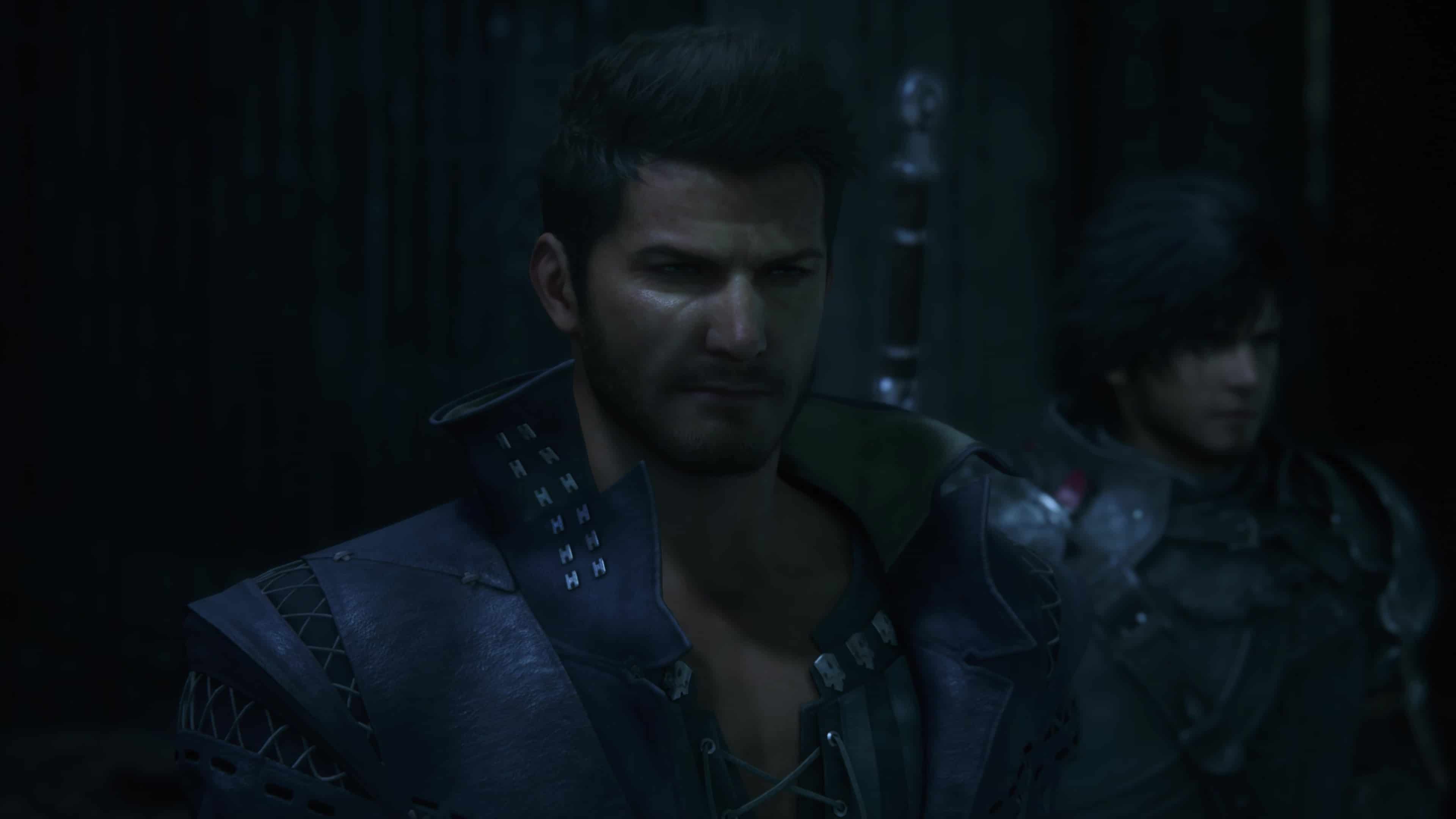
The FF16 demo was grounded and understated much of the time – even when supernatural elements came into the picture. Gone are the highly-charged, anime-influenced characterisations and dialogue rhythms that one might associate with recent Final Fantasy titles and other Japanese-developed role-playing games. Instead, Final Fantasy 16’s performances had a far more natural flow and feel, and upon learning that the primary vocal recordings and motion capture sessions were done in English – led by well-known FF14 localisation director Michael Christopher Koji-Fox – I was surprised. But it makes complete sense when you see the result.
What we’ve seen of the performances and cinematics of the game are very strong. And for the enormous Western market Square Enix wants to capture, it will likely be a worthwhile payoff.
Broadly, Final Fantasy 16 uses a high-fantasy setting to tell the story of the political tensions between a small handful of nations, each with access to their own bountiful energy source (which are crystals, of course). Each nation also has access to particular individuals who can summon an Eikon, an enormous creature that essentially serves as a weapon of mass destruction. Described as a cold war narrative, the grave British and Irish performances feel perfectly placed to tell this kind of tense, high-stakes story – like Tinker Tailor Soldier Spy (2011) meets Shin Godzilla (2016), in Medieval England.
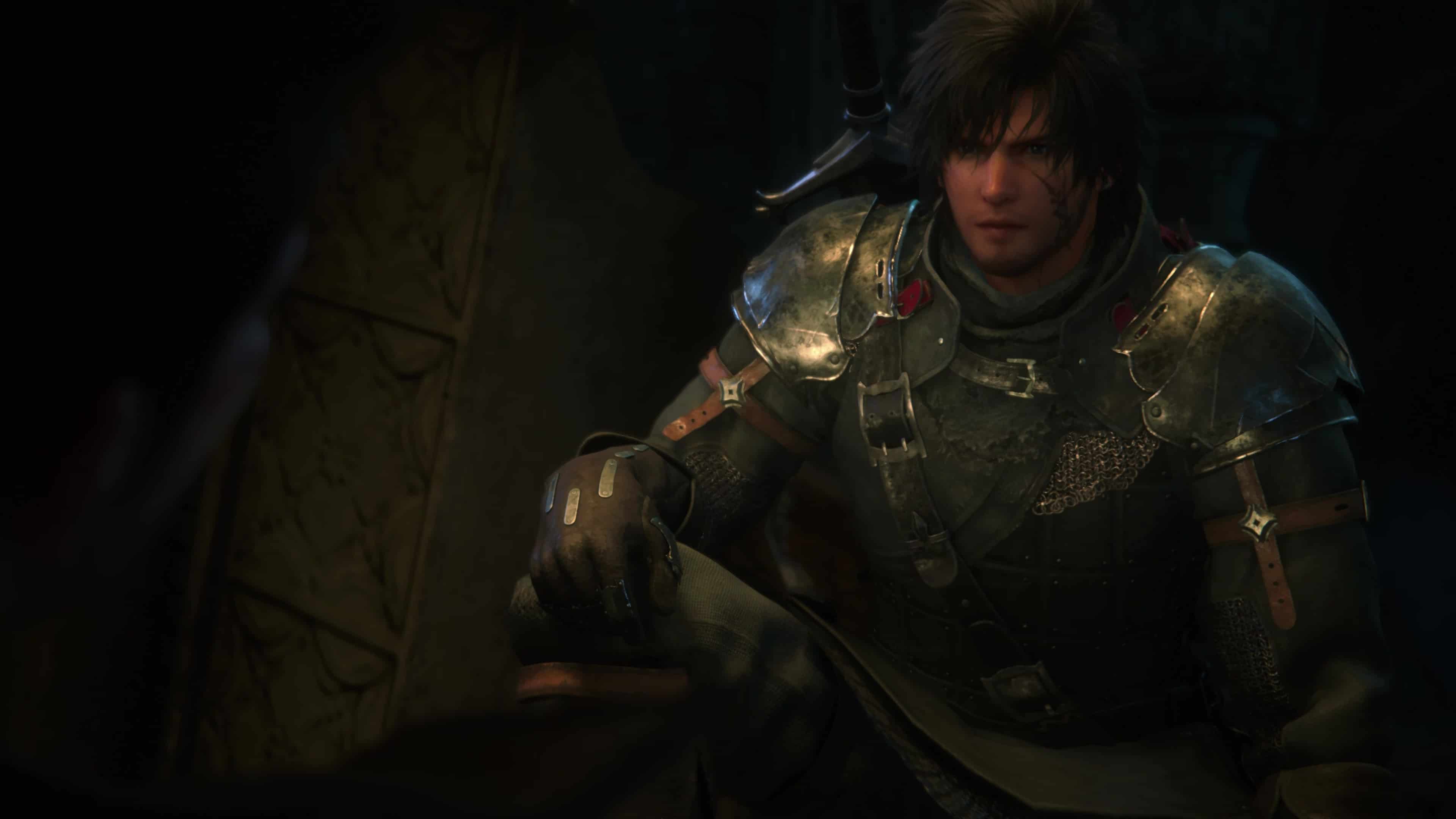
Did they say ‘fuck’ in Medieval England? Well, the jury’s still out, but in striving for more mature characters and believable, grounded performances, Final Fantasy 16 also (very likely) marks the first time a mainline, numbered game has incorporated swear words, which is a statement in itself. The word came up twice in the demo we played, and it was a surprise to hear it for the first time during a boss fight – if only for the fact that it existed.
Hand in hand with the swearing are increased levels of blood and gore, which contribute to the game’s more ‘realistic’ storytelling. During and after significant combat encounters, characters are visibly exhausted, wearing wounds and splatters of blood on their armour. When the giant Eikons clash in dramatic, cinematic kaiju battles, limbs are savagely torn off, and though they magically regenerate, their flesh-and-bone makeup is made very evident, with bone, flesh, and sinew slowly coming together in a gruesome way.
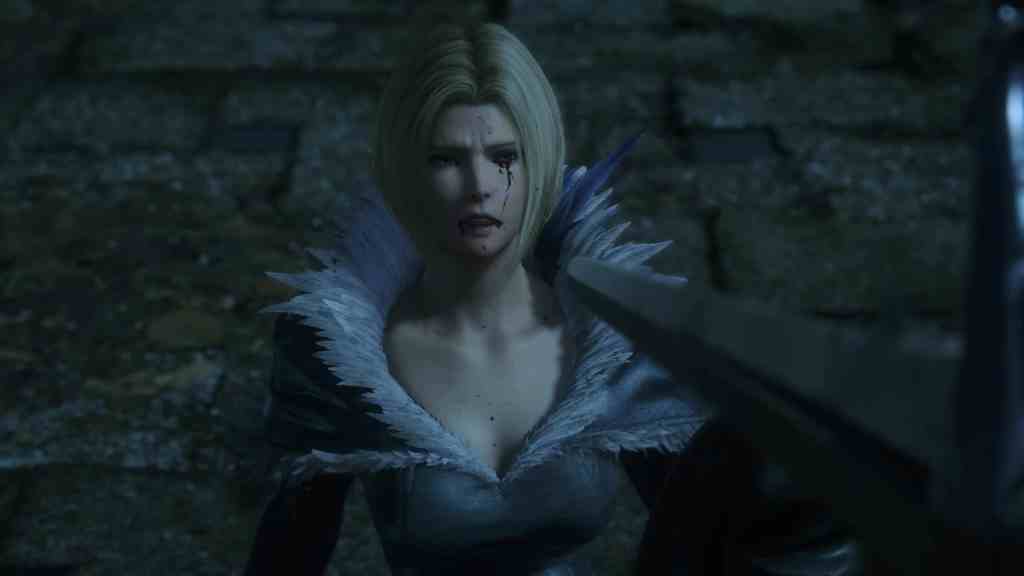
A mature Final Fantasy feels like a very different Final Fantasy. But this isn’t a ‘mature’ game in the abrasive way that spin-off Stranger of Paradise: Final Fantasy Origins was. In the short segment we played, it feels mostly restrained and in good taste. It’s easy to recognise echoes of the influences the team has distinctly strived to emulate, but we’ll continue to simply remain curious about how the rest of Final Fantasy 16 handles its new tone across the length of the full narrative.
Real-time combat, exploration, and game feel
While I feel that I should hold back on effusing too much about Final Fantasy 16’s new approach to characterisation and storytelling, it’s more difficult to restrain myself from talking about the game’s new approach to battles. In short, Final Fantasy 16’s combat system is very strong, and incredibly satisfying.
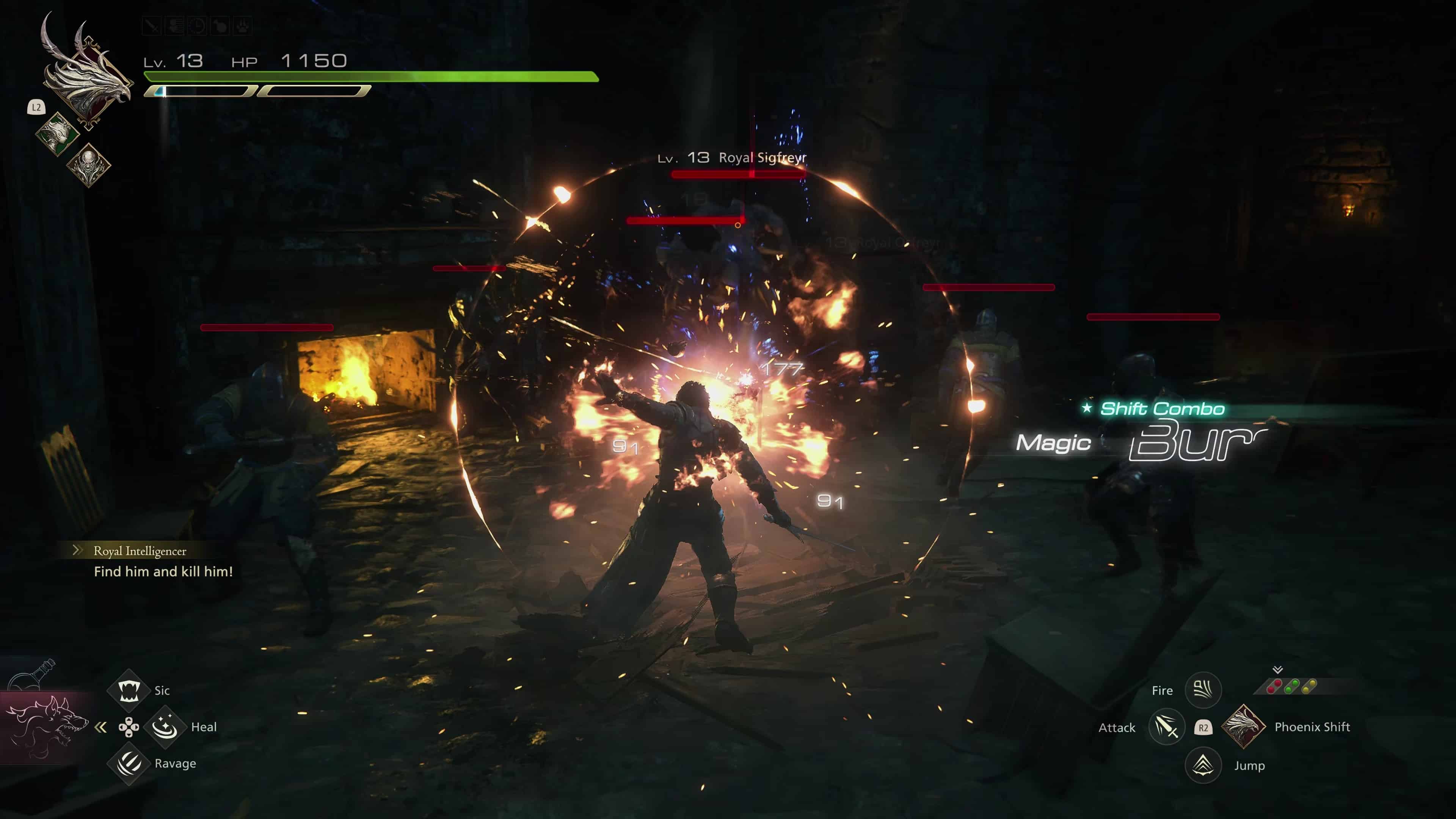
Final Fantasy 16 plays like a fast-moving character action game, in the vein of titles like Devil May Cry or Bayonetta. Presumably, that’s largely thanks to the involvement of Capcom veteran Ryota Suzuki (Devil May Cry 5, Dragon’s Dogma, Marvel Vs. Capcom 2), who serves as the combat director for the game.
Some RPG elements remain and inform the underlying maths of the system, but many staples of the series, and the RPG genre, have been removed – magical abilities no longer require a resource to cast, for example, and essentially act as a firearm – while action mechanics have been introduced. Enemies have both a health and a stagger bar, and enemies will be stunned if the latter is completely reduced.
Unlike past games, protagonist Clive Rosefield will be the only character you’ll be able to control in battle. Though you’ll be able to give attack commands to your canine companion, Torgal, any temporary party members will act of their own free will.
Attacking with sword combos, magical projectiles, and unleashing special abilities (which then go on a cooldown) are Clive’s core offensive actions. Clive can lunge with his sword, thrust downward after leaping high into the air, tumble to recover from knockback attacks, charge his sword and magic abilities, and perform flashy finishing moves on enemies that have been knocked to the ground. As a character who wields no shield, dodging is a very important manoeuvre – and Final Fantasy 16 rewards keen timing, momentarily slowing down time and giving you a bigger opening to counterattack if you dodge just as an enemy is about to hit you.
Being that Clive is a character who wields no shield, the combat system also heavily encourages going on the offence at all times, with a unique parry system that is triggered by attacking at the same time that your opponent does, and crossing blades. Charging up your Limit Break with consecutive attacks and then activating it will put Clive into a heightened state, which boosts his damage and causes him to regain health when attacking.
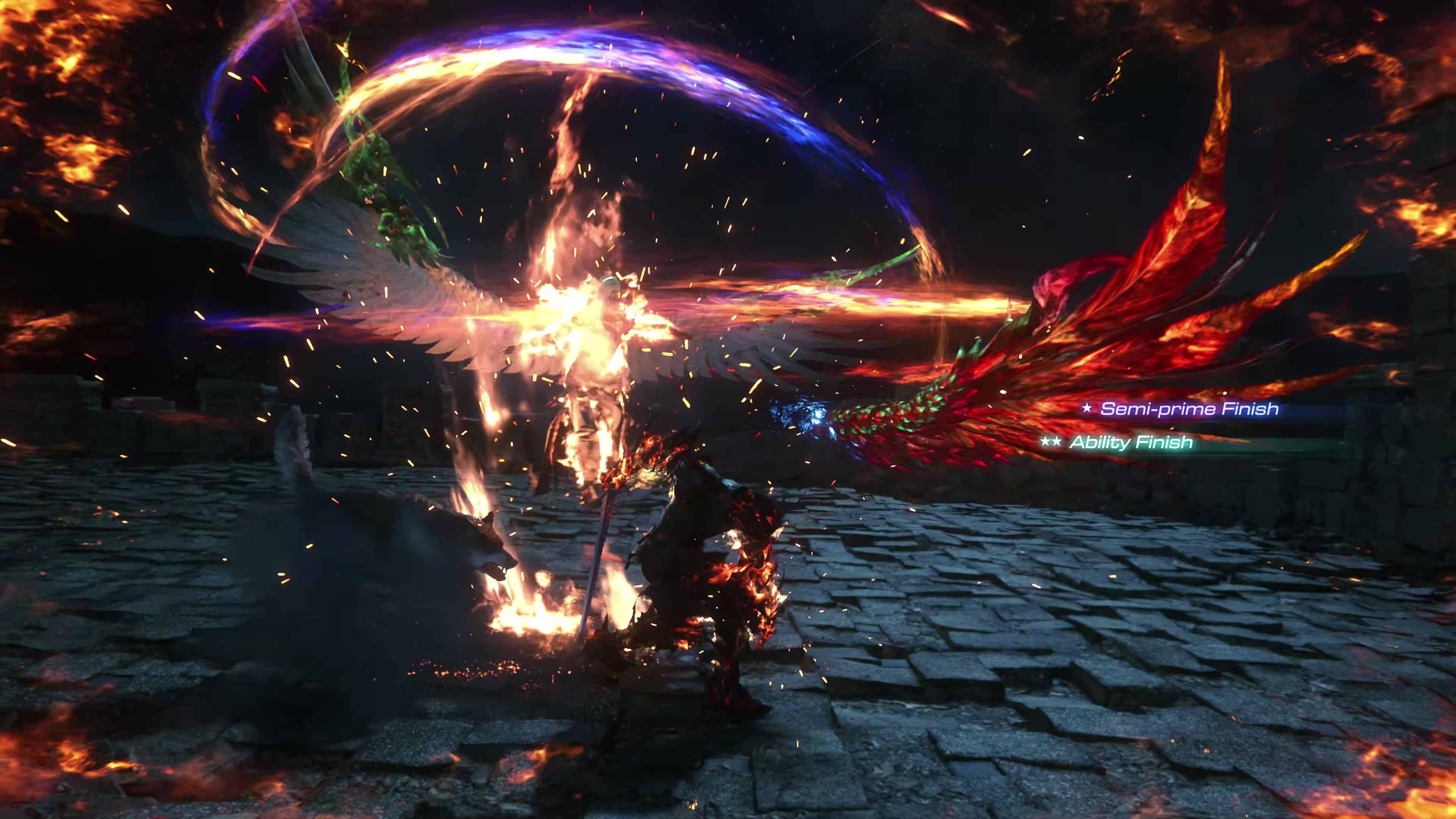
Variety comes through equipping different Eikons, which provide different sets of separate abilities. Clive can equip up to three different Eikons at once, which will provide him one innate ability (for example, a dash, a grapple, or a block and parry ability) as well as two special attack abilities, which can be swapped out for alternatives.
The complexity and joy of the combat system comes from juggling Clive’s regular attacks with several Eikon movesets at once to perform flashy combos and maximise damage, as well as knowing when to take advantage of particular styles to optimise your approach to the situation at hand. There are no elemental considerations here, just fighting styles, movesets, and looking as cool as possible while juggling all the tools you have access to.
For example, the abilities attached to Clive’s innate Phoenix Eikon focus on acrobatic moves – closing the gap with the innate dash ability, sweeping strikes that knock opponents into the air, and a spin attack. The Garuda Eikon had a different focus on pulling enemies into range with the grappling ability, and pummelling them with several quick hits. On the other hand, the Titan Eikon – my favourite – excels at single-target damage, providing a hefty block that can flow into a powerful counter-attack string if timed correctly, and powerful punches and ground slams that can be charged.
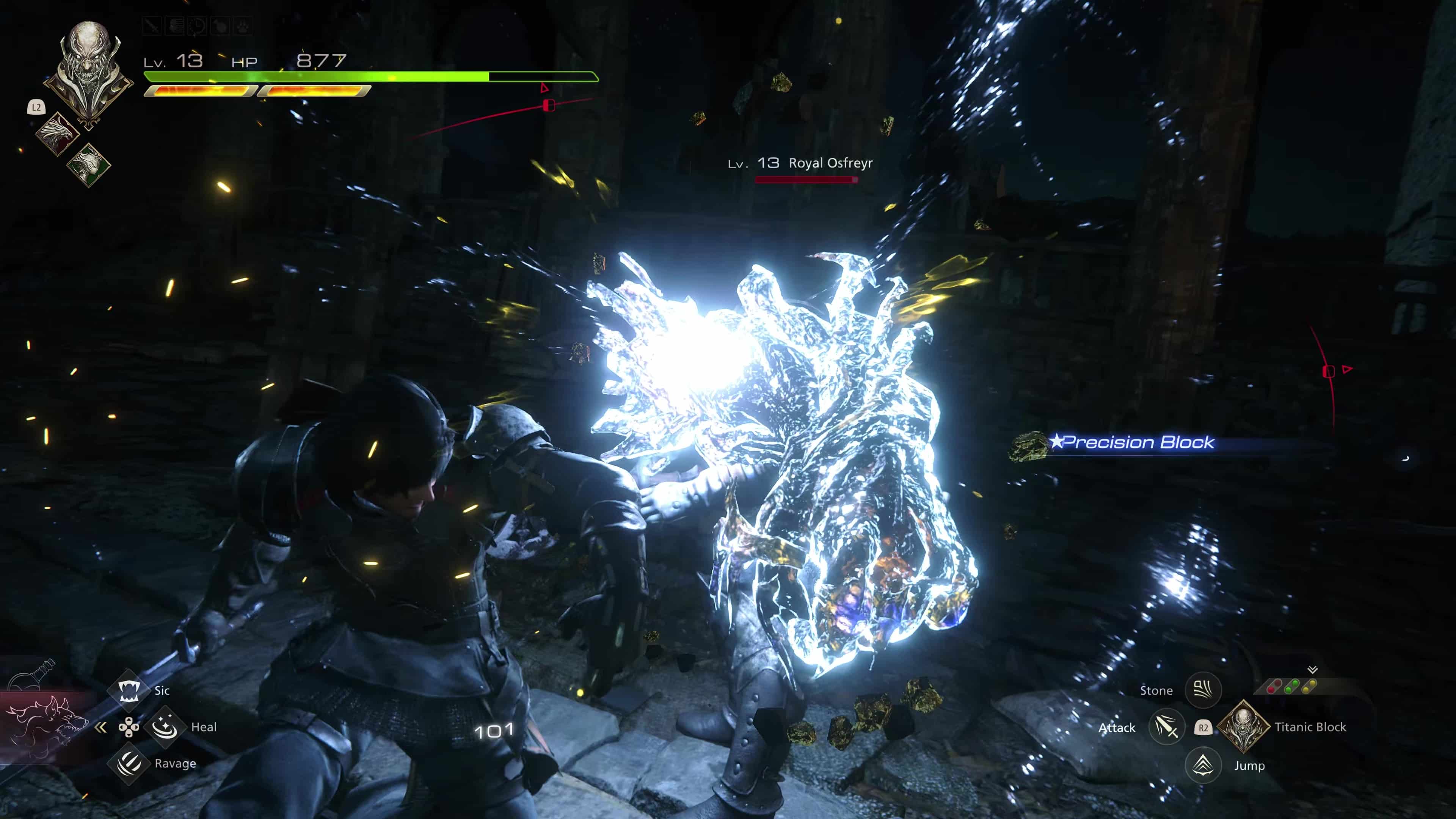
You could use each set of moves in isolation, but you can also do things like knock an opponent up into the air with a Phoenix ability, switch to Garuda to perform a rising strike that meets them in the air, and then switch to Titan to perform a ground slam on the enemy from the air.
Each of the Eikon’s abilities can also be upgraded, and at the highest level, an ability from one Eikon’s moveset can be equipped on a different Eikon altogether (there appears to be eight Eikons in total so far), providing the opportunity for a completely custom moveset by the late stages of the game. It’s a very entertaining and exciting combat system bursting with possibilities, and Final Fantasy 16 will likely be a ripe playground for the ridiculous character action combo video community.
Accessibility considerations
For those who aren’t as comfortable with fast-paced action games like this, however, it should also be noted that Final Fantasy 16 will not have an adjustable difficult setting at this stage, but instead feature a number of accessibility options, in the form of equippable items that will help players perform various combat tasks. These accessories perform functions such as:
- Performing complex combos that integrate multiple abilities and types of attacks for you, with simple, repeated button presses.
- Slowing down time to a crawl when you’re about to be hit, allowing you to dodge perfectly.
- Using healing items for you automatically when your health is low.
- Automatically commanding your canine companion Torgal to attack, when suitable.
It’s an interesting system, and when initially coming to grips with the combat system in the demo, it was very nice to be able to let the game take care of healing for me, while I tried to perfect the timing for parries.
The catch is, however, that you’re only able to equip a total of three accessories in total. And in doing so, you’ll also forfeit the ability to use those limited items slots to equip regular accessories, such as those that boost Clive’s stats. The developers say this approach allows the players to enjoy the story while engaging in at least some parts of the combat system, but for those who truly struggle with action games, or require a greater degree of aid, it may not provide all the flexibility they need.
Whether using the assistance items or not, each hit, each successful dodge, and each manoeuvre in Final Fantasy 16’s combat system immediately feels excellent. Each move is visually expressive, and has an incredibly gratifying feedback loop.
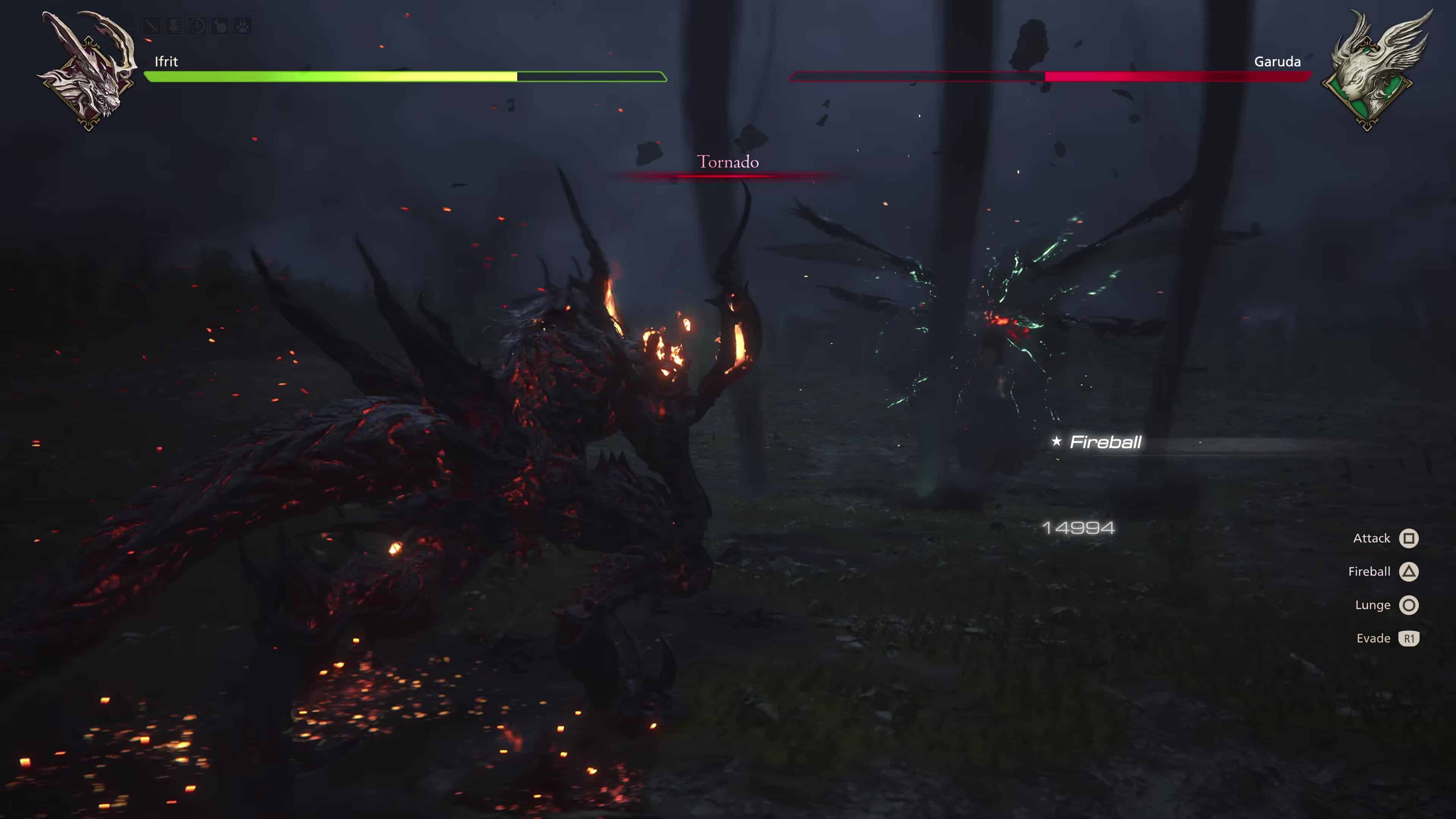
Enemy encounters come in a variety of shapes and sizes, too. As you explore the environments – which are visually stunning to an incredibly high degree – the game will transition seamlessly (taking inspiration from the aforementioned God of War) between player-directed movement, narrative scenes, and enemy encounters. These encounters range from mobs of weaker enemies, to more hard-hitting mini-bosses, to more dramatic and cinematic boss encounters with characters who have unique and devastating move sets to battles against towering Eikons themselves.
Each individual battle is a joy, and as someone who very much enjoys character action and fighting games, I simply could not get enough of this battle system. I played through it twice just for the inherent satisfaction of it – and I wanted more.
Final Thoughts
Final Fantasy has changed. Final Fantasy 16 is a solemn action game – a very good one at that, so far – and it’s incredibly impressive. In a world where Final Fantasy VII Remake and Rebirth are continuing to extrapolate the traditional ideas of what the series was, FF16 takes a big leap sideways with such infectious enthusiasm, you can’t help but be excited to see where it goes – for better or worse.
By completely rethinking the Final Fantasy 14 MMO, Yoshida and his team have already proven they have the collective skill to perform some incredible feats of rejuvenation. With Final Fantasy 16, it appears they’re doing it again – only now, it’s with the entire identity of the series.
Perhaps it’s apt that Clive’s Eikon, the Phoenix, appears to feature so heavily.
Final Fantasy 16 releases on 22 June 2023 for PlayStation 5.
Square Enix provided flights and accommodation to GamesHub for the purposes of playing Final Fantasy 16 and speaking to its developers. Square Enix did not have oversight of this article. GamesHub has affiliate links. These do not influence editorial content. GamesHub may earn a small percentage of commission for products purchased via affiliate links.





